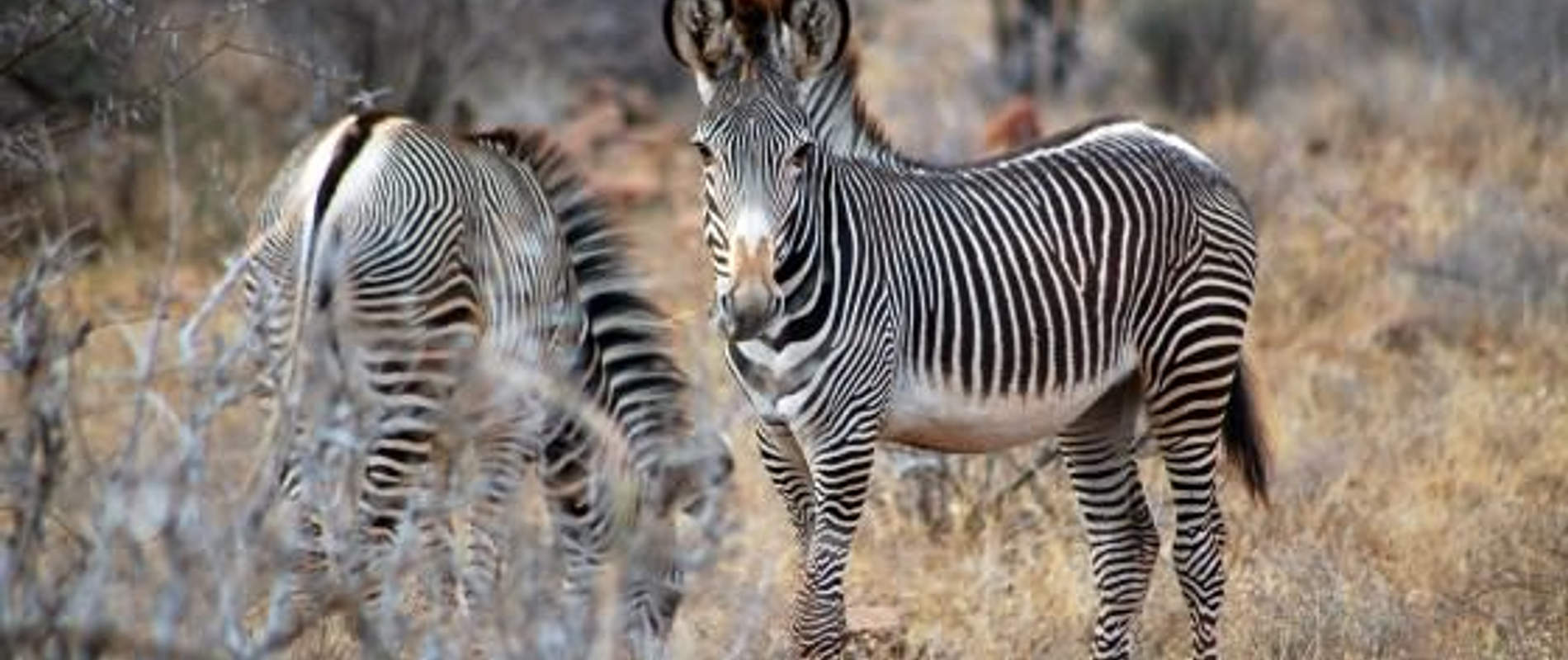Can you spot the difference between a plains or Burchell’s zebra?


Can you spot the differences? The first picture is of two plains or Burchell’s zebra. They are found all over Africa, in large numbers. The second picture is of endangered Grevy’s zebras.
Grevy’s zebra are the largest wild equid in the world and tragically the most endangered species of zebra. Their large ears and tight, narrow, stripes differentiate them from their smaller cousins, the Burchell’s zebra. They also have a distinct Mohawk style mane, which stands tall above their neck and are further distinguished by their white belly and rump.

Unique and attractive coats made them popular trophys during the 20th century, which contributed to their endangered status. Recently, however, habitat loss has fuelled the flame.
Their territory once stretched from Djibouti and Eritrea down through Ethiopia, Somalia and Northern Kenya, but is now restricted to fragmented parts of Northern Kenya and Southern Ethiopia. Since the ‘70s the wild population of Grevy’s has declined from around 15,000 to less than 2,500.

Grevy’s are well suited to life in semi-arid climates such as Tsavo, and although they weren’t naturally found here, a total of 50 individuals were introduced to Tsavo in 1964 and 1977. This small population was largely forgotten about until only recently. Today, Marwell Wildlife and their partners, with support from Wildlife Works, the David Sheldrick Wildlife Trust, Tsavo Trust and Barbra McNight are monitoring them and building a database.
The David Sheldrick Wildlife Trust assists, when possible, by documenting sightings, which will help the researchers to identify the movement of individual zebras. Photographs are used for this purpose. The stripes on a zebra are a like a unique thumbprint – no two exactly alike – so they can be easily identified. In fact, software is being developed that will allow the stripes of a Grevy’s in a photograph to be read like a barcode and automatically identified.

According to the aerial game count conducted in February, the small Tsavo herd is dwindling. Only 26 individuals were counted, mostly outside of Tsavo East National Park in the neighbouring ranches. There are at least two sub-groups with young foals, which is encouraging. They have been spotted both from the air and also from the ground.

Sadly, even this population is under threat. Parcels of land that surround the Park and have formed an important buffer in the past are being carved up and planted with crops. In other areas, overgrazing is leading to land degradation and livestock comes into direct competition with Grevy’s zebras as well as other animals.

The importance of this beautiful and unique animal’s presence in Tsavo is multi-faceted. They belong to a broader population of Grevy’s that is facing extinction but they also represent countless other species facing the same threat. For this tiny population to have survived this long is encouraging in some respects, but the expectation was that they should be doing better. The original intention was to setup a satellite population, independent from those in the North. Today, their dwindling state is a negative early indicator of the ecosystem’s health. The fact that they are not thriving highlights the threats facing this fragile ecosystem. The fate of the Tsavo Grevy’s and their environment are one-in-the-same. Protect one and you protect the other.
